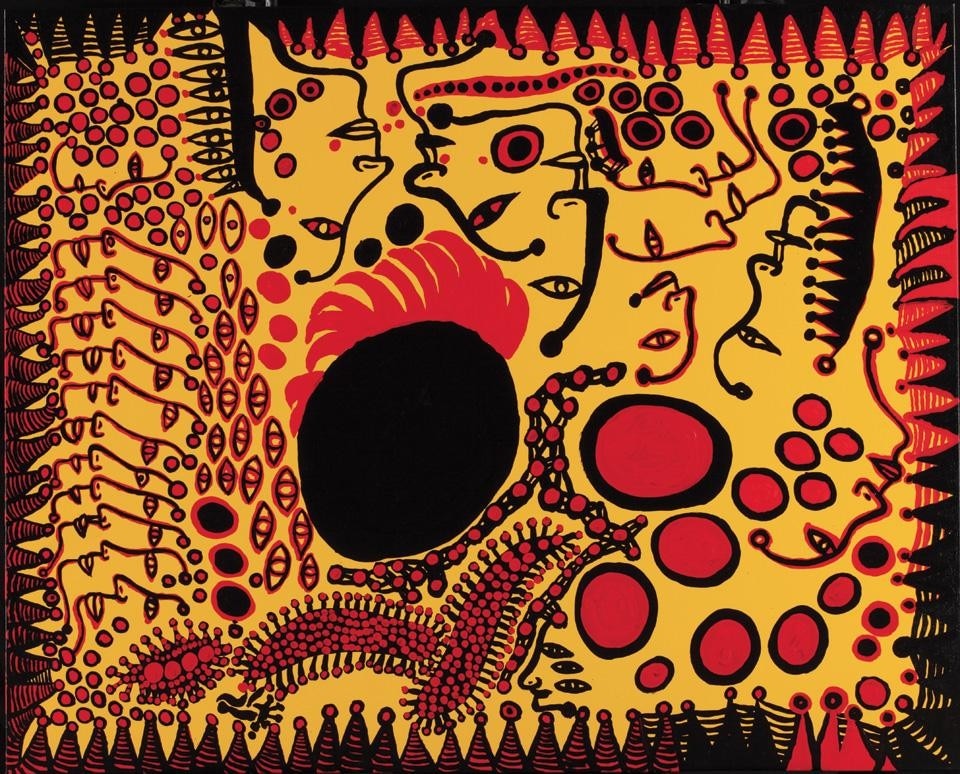Kusama's most recent retrospective, organized by the Tate Modern in London and making its last stop now at the Whitney Museum of American Art, does not disappoint for lack of iconic works from that golden NYC period: One gallery is dedicated to Kusama's obsessively painted Infinity Net paintings (outsize canvases covered entirely with small and white, scalloped brushstrokes) from 1959–61, while another room showcases her dizzyingly wrought Compulsion Furniture (Accumulation) from the early 1960s, in which she affixed hundreds of fabric-sewn, tubular forms to common household objects — ultimately creating a roomful of Pop sculptures personifying a fully furnished and compulsive psychic interior. Another room is devoted to Self Obliteration — a psychedelic film which mashes up images of Kusama's paintings and installations with many of her 1967 performances: scenes follow the artist riding a polka-dotted horse through upstate New York, painting spots on a pond's surface, or — cutting back to the city — directing orgiastic body-painting parties, held inside her own installations of mirrored walls and blinking lights.


Kusama’s oeuvre is a pure delight to observe, despite her paradoxically distressed inner life. Her career — as shown here through a beguiling progression of work — is a true testament to the alchemical potential of art


Kusama's oeuvre is a pure delight to observe, despite her paradoxically distressed inner life. Her career — as shown here through a beguiling progression of work — is a true testament to the alchemical potential of art. Emily Weiner




